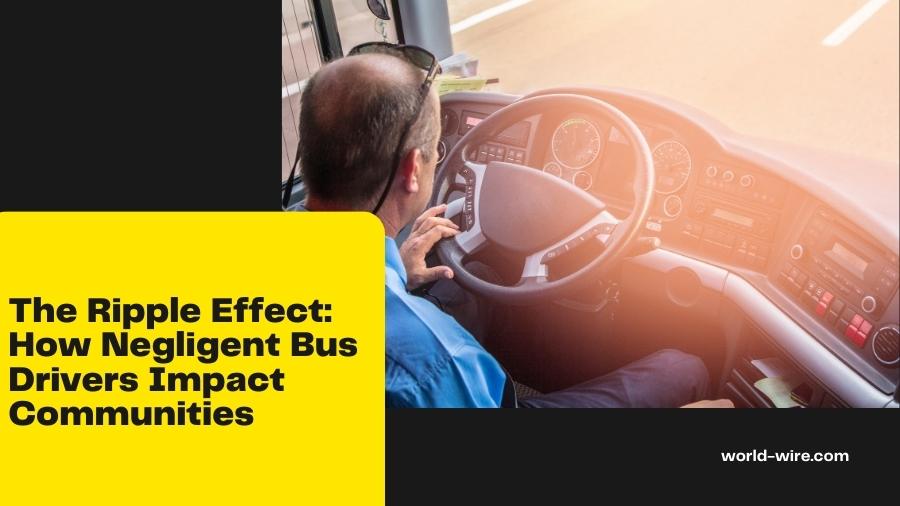As a hub of connectivity and mobility, the CTA’s buses serve as lifelines that thread through the diverse neighborhoods, seamlessly interweaving the lives of their inhabitants. However, amidst this intricate urban fabric, the actions of a few can unleash a ripple effect that reverberates far beyond the confines of the vehicle. This result of careless bus drivers exposes a sobering reality. Their actions profoundly impact beyond simple transportation accidents and shape the communities they travel through.
The crucial role that Chicago’s public transportation system plays reflects its reputation as a dynamic metropolis known for its architectural marvels, cultural landmarks, and resilient citizens. Yet, as we delve beneath the surface, we encounter a critical concern—negligent behaviors exhibited by bus drivers can trigger a chain reaction of consequences that compromise the well-being, safety, and cohesion of entire communities.
If you or a loved one were injured on the road, you must sue the negligent bus driver for restitution. This process requires legal expertise and careful consideration on multiple fronts. Hence, you should consult competent legal aid to guide you through the system. But before you speak to a professional, knowing the defendant’s obligations is essential. This article will explore the impact of negligent bus drivers on communities by examining their legal responsibilities and methods to prevent accidents.
Obligations of Bus Drivers
Bus drivers are responsible for transporting passengers securely to their destinations. As such, they owe passengers and other road users a duty of care. This violation is referred to as negligence.
Negligence on the part of bus drivers can take the form of reckless driving or vehicle operation without appropriate maintenance checks. Bus passengers and other motorists are in danger when these violations occur.
In addition, violations of traffic laws frequently result in serious collisions that cause injuries or deaths among community members. The legal repercussions of each accident inevitably result in higher insurance premiums for transit authorities, which ultimately affect commuters who have no direct connection to the incident. This phenomenon is known as the “ripple effect.”
In such scenarios, seeking legal recourse becomes essential for those affected. Legal professionals with expertise in personal injury law can play a pivotal role in ensuring victims receive the maximum compensation they deserve. Whether through negotiating settlements or representing clients in court, these legal experts work diligently to uphold the rights of those impacted by bus driver negligence.
Adverse Effects on Local Residents
Negligent actions by bus operators do not only affect those directly involved in motor vehicle accidents; all commuters within commuting regions eventually experience their repercussions, primarily financially.
Injured parties may incur recovery-related medical expenses, while family members lose income due to time off work spent caring for victims of tragic incidents. If left unaddressed for too long, these unanticipated expenses can hurt local businesses in areas where fatalities occur and the emotional and economic well-being of entire neighborhoods, resulting in social unrest.
Moreover, reducing the availability of public transportation services (when authorities attempt to cover losses incurred due to said events) will harm all community members equally. This includes children who cannot attend school, patients with critical medical conditions who miss hospital appointments, and clients who cannot find work as quickly as possible.
Preventive Measures
While bus operators hold legal obligations to ensure passenger safety, unfortunate incidents may still occur. However, transit authorities can adopt various measures to mitigate the impact of negligence, thus prioritizing the safety of passengers and the general public. These preventive strategies encompass:
- Stringent Regulations: Transit authorities can enhance safety by implementing rigorous pre-employment screenings, ensuring that candidates meet the qualifications and exhibit a clean record. Furthermore, enforcing strict disciplinary measures for employees who breach safety regulations or fail compliance checks creates a culture of accountability. Continuous education programs reinforce accurate and secure operation practices throughout an employee’s tenure.
- Preventive Maintenance: Regular and thorough inspections conducted by trained professionals are imperative to maintaining passenger safety. Crucial safety features such as seat belts, sirens (where applicable), and brakes must be diligently examined to ensure they are in optimal working condition. This proactive approach to vehicle maintenance minimizes the risk of malfunctions that could lead to accidents.
- Surveillance Technologies: Integrating monitoring technologies into bus operations provides an additional layer of oversight. Employers can identify areas that necessitate improvement through real-time data insights. Dashcams installed in vehicles offer a comprehensive view of incidents, aiding managers in accurately understanding the sequence of events. These technological solutions facilitate post-incident analysis and contribute to a culture of transparency and accountability.
By adopting these preventive measures, transit authorities can significantly enhance the safety of their operations, minimizing the potential impact of negligent behavior. Combining stringent regulations, proactive maintenance, and surveillance technologies creates a comprehensive approach that fosters a safer environment for passengers, operators, and all road users.
Bottomline
In the intricate fabric of urban connectivity, bus drivers hold a pivotal role in binding neighborhoods, yet their negligence can unleash a ripple effect disrupting safety and community cohesion. Beyond accidents, their actions strain local economies and well-being, prompting the need for legal recourse. Balancing legal obligations and preventive measures is essential. This collective responsibility, from stringent regulations to embracing technology, holds the key to fostering safer, more resilient communities where the impact of negligence is minimized and the unity of urban life is preserved.
Table of Contents







Add Comment